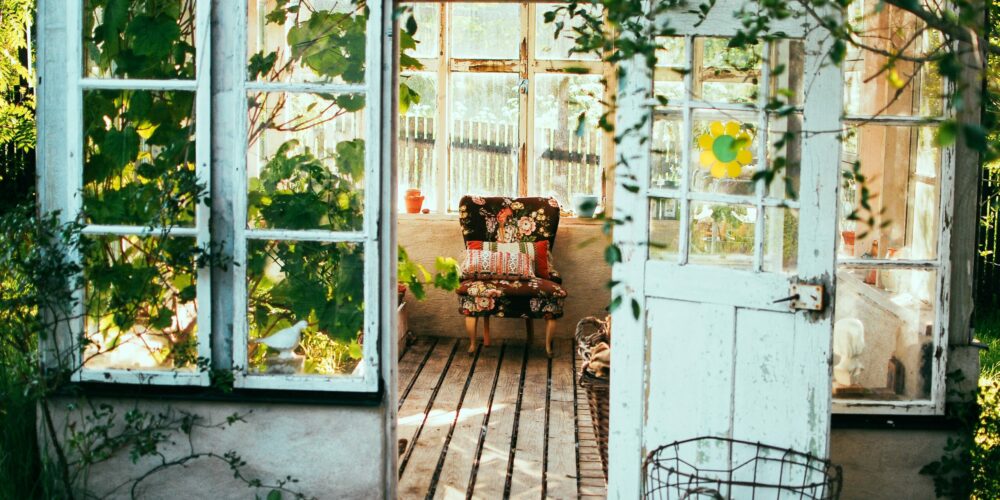July in the Garden
By July we’re already in high summer. Temperatures can be hot and days can be sunny, but there is always the risk of thunderstorms and less settled weather. There is an old saying that, if it rains on St.Swithun’s Day (15th July) it will rain for 40 days and 40 nights after that. Sometimes the garden is so dry that the prospect of 40 days of rain sounds quite attractive, but it’s a very long time to be without sunshine!
This is the month when we hope to be sitting outside, perhaps having tea in the garden and enjoying the fruits of our labours, and when gardeners can wind down a little bit after all the sowing, planting, weeding and soil preparation. Or so they think. Turn your back and the weeds are growing and taking over, whilst plants that have already flowered need deadheading and cutting back! But before we get to that, what can we enjoy in the garden right now?
Herbaceous Perennials
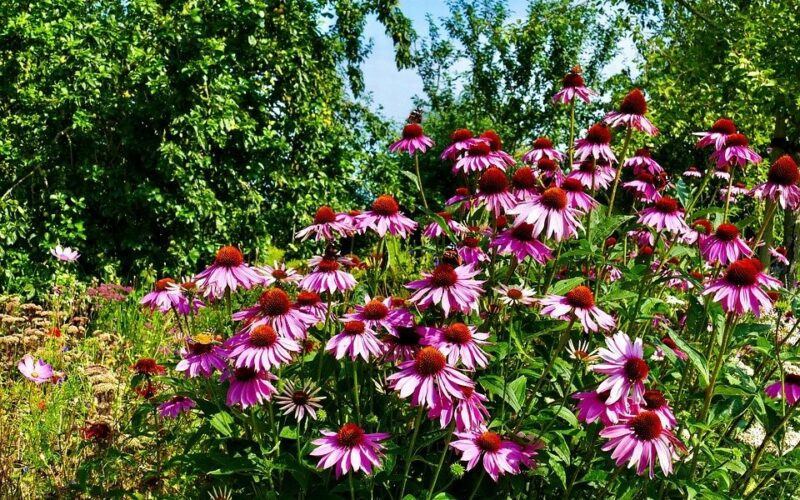
Many of the classic, well-known herbaceous perennials such as delphiniums, lupins, geraniums, hollyhocks, and echinacea, come into their own in the UK in July. Some of these require more care and watering than others. Lupins and delphiniums, for instance, are prone to attacks by aphids and slugs and snails. Some perennials (Lobelia cardinalis, for instance) require a lot of water. If these are likely to be a problem, perhaps the solution is to grow drought-tolerant plants and plants that tend to be left alone by various pests.
Drought-tolerant plants include
- Verbena Bonariensis
- Eryngiums
- Geraniums
- Geums
- Nepeta
- Verbascums
A lot of these plants originate from hot, arid regions of the world and are thus used to surviving with very little water.

Verbascum
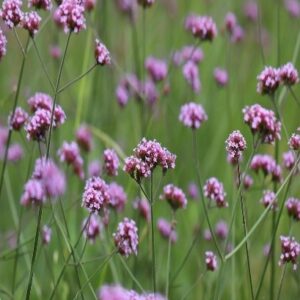
Verbena Bonariensis
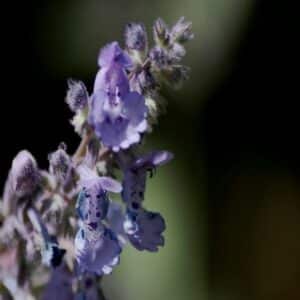
Nepeta Faassenii
Many plants have developed resistance to slugs and snails. Some, such as foxgloves and euphorbias, have toxic leaves, while others, such as Stachys and pulmonarias, have hairy leaves which slugs appear not to like. Penstemons are also slug-resistant and have the advantage of being very attractive to bumblebees.
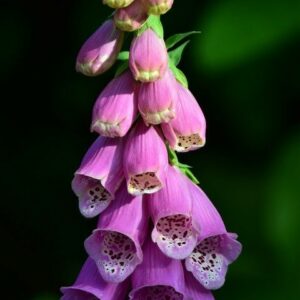
Digitalis (foxglove)
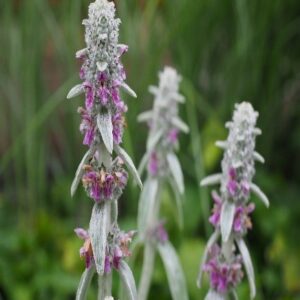
Stachys Lanata
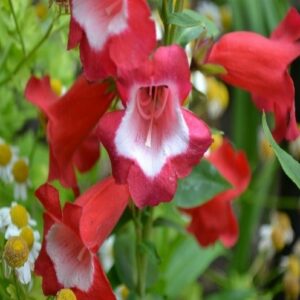
Penstemon
The former is grown against a fence as a climber and “Malvern Hills” is a rambler.
Of the old roses that I have, “Souvenir du Docteur Jamain” (bred in 1865) was said to be the favourite rose of Vita Sackville-West. It has a beautiful scent.
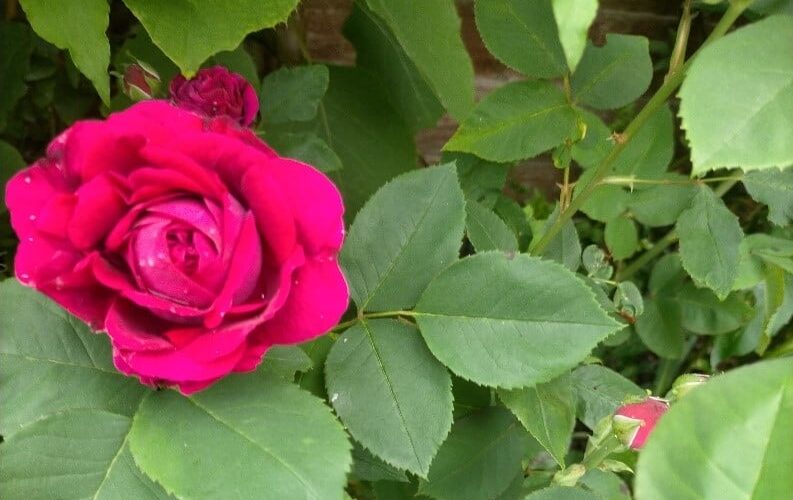
And because of my family connections to Yorkshire and my husband’s to Lancashire, we had to have the two roses that were symbols of the two houses in the War of The Roses, the White Rose of York (Rosa Alba Semi-Plena) and the Red Rose of Lancashire (Rosa gallica Officinalis)!
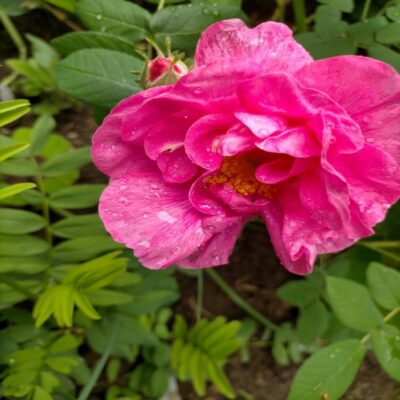
Rosa Gallica Officinalis (The Red Rose of Lancaster)
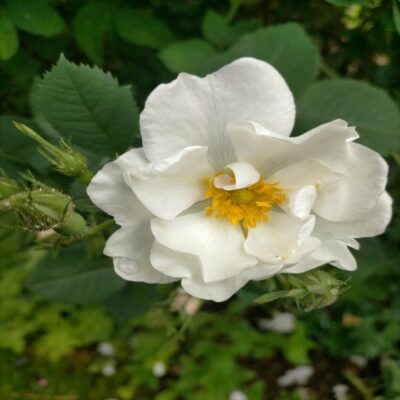
Rosa Alba Semi-Plena (The White Rose of York)
Annuals
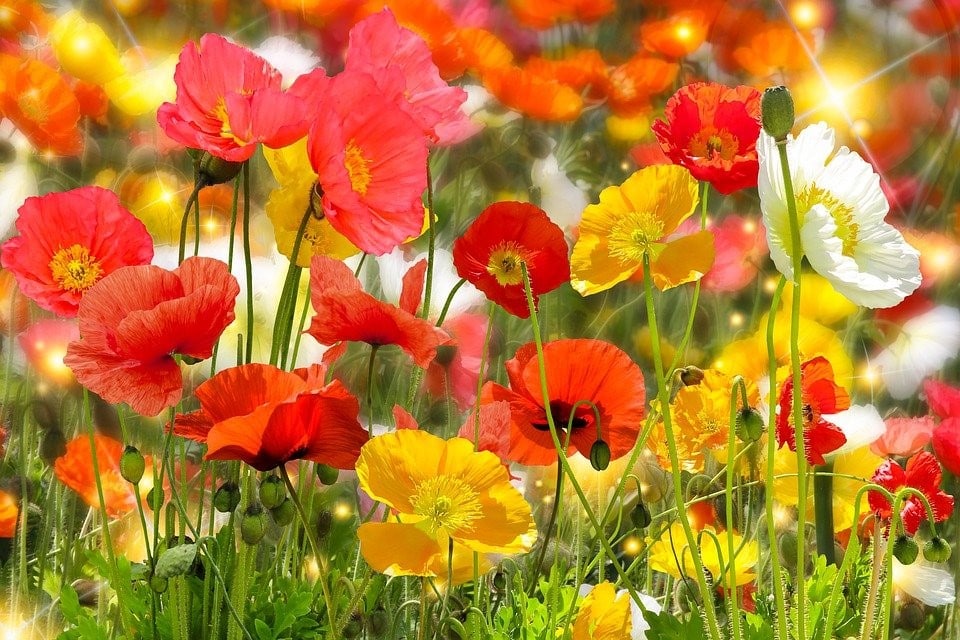
In July many of the annuals that were sown earlier in the year, either under glass or in the open, come into their own and fill the garden with colour. These include calendula, nigella (love-in-a-mist), zinnias, antirrhinums, escholzia, cosmos, and cornflowers. Some of these will seed themselves and reappear in the garden next year. Annuals are comparatively cheap and are a good way of filling in gaps in the borders. Many attract pollinating insects. Just remember to keep them well watered and cut them back to keep them in shape (unless you want them to self-seed, of course).
Roses

June is usually the best month for roses in the UK, but, perhaps due to the late Spring that we had, mine are only just starting to look at their best. Yes, they are thorny, and yes, they get blackspot, but their beauty and fragrance more than makeup for it. I’ve lost count of how many roses I’ve got in the garden, but amongst my favourites are two David Austin varieties “A Shropshire Lad” and “Malvern Hills”.
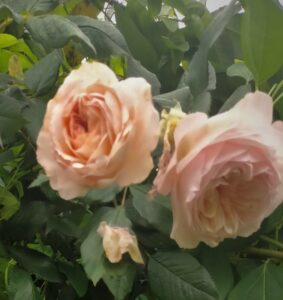
A Shropshire Lad
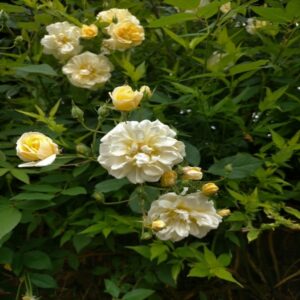
Malvern Hills
Roses aren’t too much trouble at this time of year if they’re fed and deadheaded regularly. There is useful advice on growing and caring for roses on ‘David Austin Roses’.
Trees and Shrubs
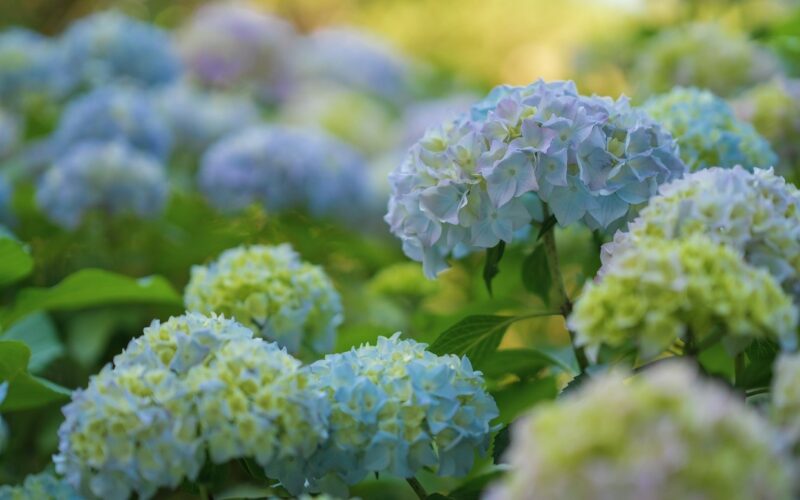
In bloom in July we find hydrangeas, cistus, abelia, lavender, hebe, deutzia, weigela and fuchsias. As you can guess from the name, hydrangeas require a lot of water (Greek: hydra= water, angos = jar or vessel). Grown in acid soil their flowers will be blue, whilst alkaline soil produces pink flowers. Cistus and lavender thrive in hot, sunny places. Both need to be trimmed back after flowering if they are not to become leggy.
Deutzia is a very pretty shrub that isn’t perhaps as widely grown as others. It is evergreen and covered in pink or white flowers in the summer which bees love. There is also a smaller version called Deutzia gracilis which has delicate white flowers. Some are scented. Again, these should be pruned after flowering keep them in shape.
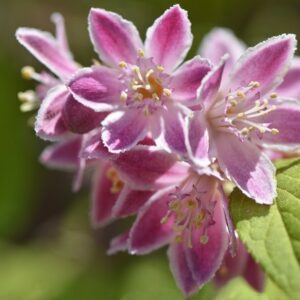
Deutzia

Cistus
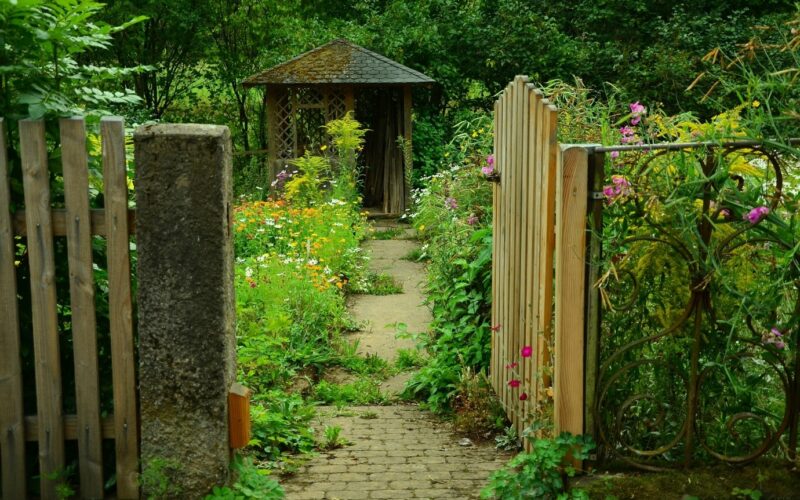
It would be nice if, having worked hard all year in the garden, we could just sit back and relax during July! Unfortunately, certain tasks, such as weeding, watering, and pruning/deadheading have to be kept up if the garden is going to stay looking at its best.
Weeding
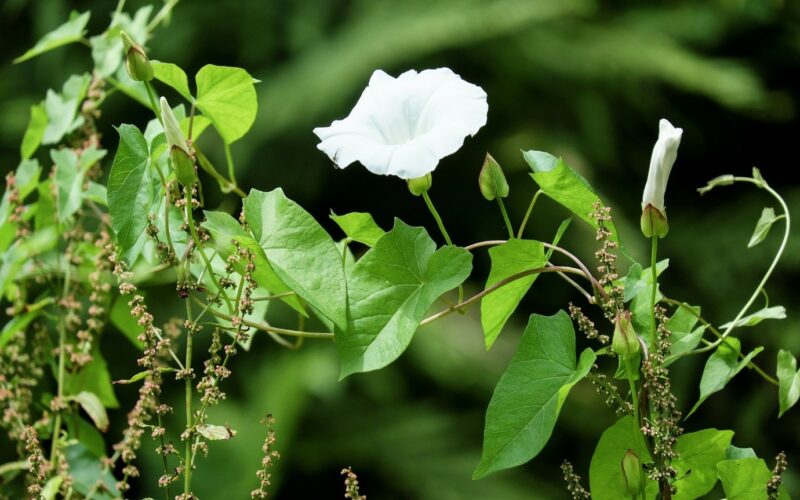
In her book “Anna Pavord’s Gardening Companion” there is a paragraph about weeds:
“In a grudging way, you have to admire the cheek of weeds. Without an invitation, they turn up anyway to the party and then proceed to take it over…..weeds were here first, and they don’t want you to forget it. Turn your back and they creep silently back into their territory, garotting the newcomers as they advance”
Annual weeds are not as much of a problem. There are a lot of them, but they are not as difficult to get up, although they reproduce by scattering thousands of seeds. The trick is thus to catch them before they seed. Thick planting helps to beat them and bare earth can be covered with black plastic or cardboard.
Watering
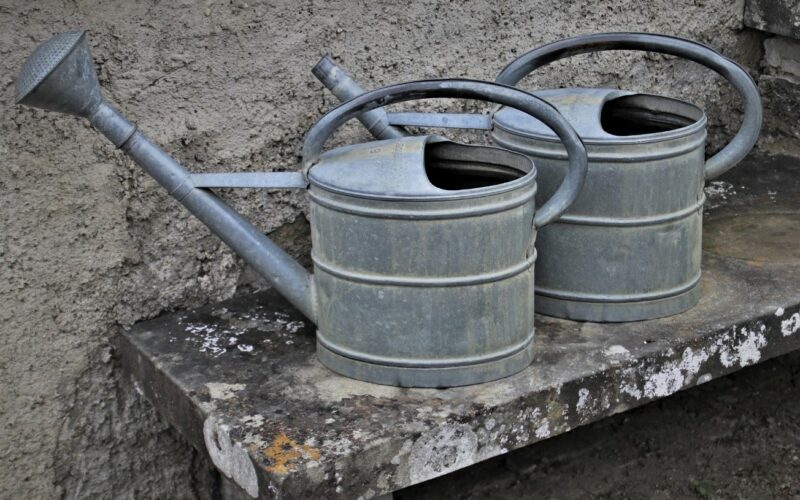
Summers in recent years have been drier in the UK and knowing when to water your plants and how much water to give them is always a big question. One solution, as we’ve already mentioned, is to grow mainly drought-resistant plants – but even these will need watering in when they’re first planted.
In order not to waste water, which is scarce during a dry summer, here are some golden rules suggested by Garden Organic:
- Always water the soil, not the plant.
- Water in the evening, after the sun, has gone down, or in the early morning when the soil is cool.
- Use a watering can. It directs water exactly where you need it.
- Apply mulch around your plants after watering. A covering of grass cuttings, leaf mold, straw – even cardboard – after you have watered will keep the moisture in. If you grow in pots, use gravel on top to stop the soil transpiration.
- Don’t water lawns, they always recover.
- Make sure all your downpipes have water butts connected. Keep all rinsing water from washing vegetables and use this in your garden.
- Use greywater from baths and washing up, but don’t use too much soap or shampoo. Don’t use greywater on seeds.
- Use homemade compost to add nutrients to your soil and improve structure. Sandy soils will retain water better and clay soils will become less dense.
More information on how to water your garden wisely can be found on Garden Organic.
Pruning and Deadheading
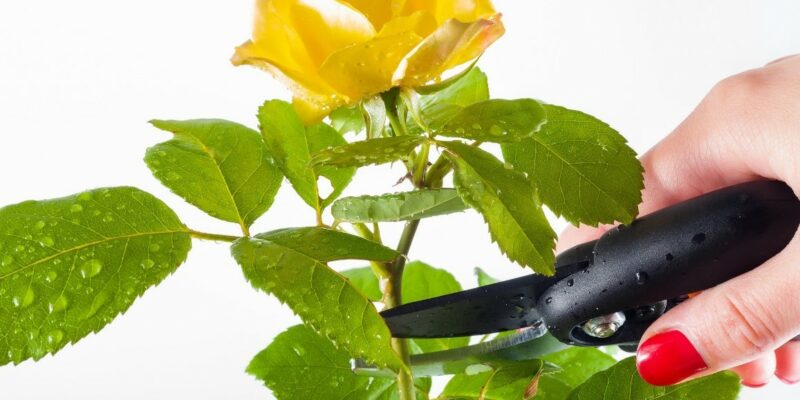
Other important tasks for this time of the year are deadheading and pruning.
Deadheading
Taking the dead flower heads off plants improves their vigour and often encourages them to flower again. With small flowers, especially annuals, it’s possible to pinch off the dead flower with your fingers. Other plants may require secateurs or even shears.
Sometimes it’s a good idea to let certain plants form seedheads, either for their ornamental value (eryngium, for example) or to provide food for the birds in the winter (aster, echinacea).
And the flowers of roses that produce colourful hips in the Autumn can be left alone.
For more advice on dead-heading, visit the “Gardeners’ World”
Pruning
Shrubs that flower on stems formed in the previous year need to be pruned now. These include deutzia, philadelphus, forsythia, flowering quince, and Lilac.
Tender shrubs can be pruned now. These include outdoor fuchsias and abutilon, as well as evergreen shrubs such as camellia and ceanothus. If pruned too early in the year their stems will be vulnerable to frost damage.
Rambling roses, such as “Rambling Rector” and “Kiftsgate” should be pruned immediately after flowering to keep them in shape and to ensure that they don’t just flower at the tops of their stems.
And, finally, many climbers can be pruned now to keep their growth under control. These include honeysuckle, wisteria, and jasmine.
More advice about the reasons for summer pruning and the ways in which to do it can be found on the “Gardeners’ World”

About the Author
Caroline Bowman has been hooked on gardening ever since she grew some thyme from seed and planted it in a window box when she lived in a flat in London. Fifty years later she is still hooked on gardening, but now she lives in Lincolnshire in England where they have quite a big suburban garden as well as an allotment, where they grow fruit and vegetables. Caroline loves flowering plants, in particular herbaceous perennials and she likes finding out about the more unusual varieties that will do well in the English climate and soil.
More from Gardenize
Images published on the Gardenize website belong to Gardenize AB and may not be used without permission.

